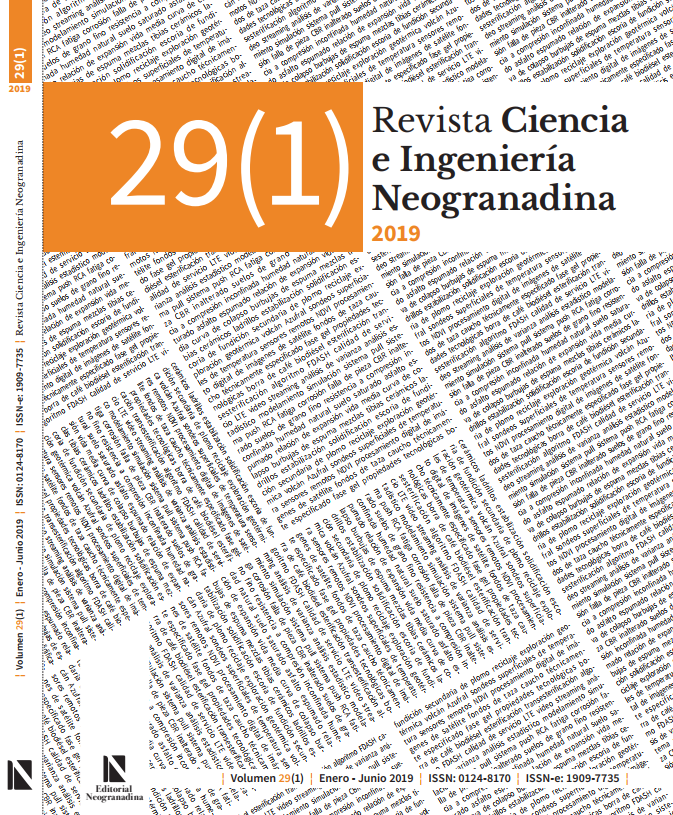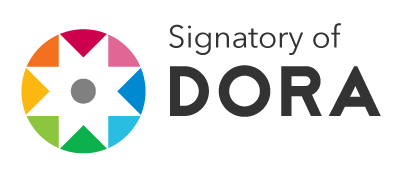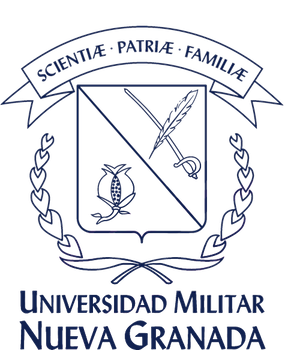Modelos de temperatura del suelo a partir de sondeos superfciales de temperatura y sensores remotos para el área geotérmica del volcán Azufral
Resumen
La estimación de la distribución de calor en superfcie y a profundidades someras (20 cm,
100 cm y 150 cm) por medio de los sondeos superfciales de temperatura (SST) para el área geotérmica del volcán Azufral encontró anomalías entre los 6ºC y los 20ºC. A su vez, se realizaron modelos
de temperatura mediante imágenes Landsat 8 del sensor TIRS (por sus siglas en inglés), que permitieron alcanzar una aproximación de la distribución de calor en superfcie con tres imágenes con
fecha de toma cercanas a las fechas de levantamiento de los SST. Integrando el índice de vegetación
de diferencia normalizada (NDVI, por sus siglas en inglés) (entre 0,93 y -0,563) y la topografía (alturas
entre 2800 msnm y 3800 msnm) en secciones cruzadas mediante técnicas de análisis espacial, se
analizaron las anomalías positivas y negativas de estas tres variables en el área geotérmica. Con la
estimación del coefciente de Pearson como método cuantitativo para el análisis de las correlaciones
entre los diferentes modelos generados, se denota que existe una fuerte correlación positiva (entre
0,19 y 0,46) entre las temperaturas en profundidad contra las temperaturas para cada uno de los días
calculados con Landsat 8 TIRS.
Descargas
Disciplinas:
IngenieriaLenguajes:
esAgencias de apoyo:
Servicio Geológico ColombianoDerechos:
CC 4.0Tipo:
pdfReferencias bibliográficas
Coolbaugh, M., Sladek, C., Zehner, R. y Kratt, C. (2014). Shallow Temperature Surveys for Geothermal Exploration in the Great Basin, USA, and Estimation of Shallow Aquifer Heat Loss. GRC Transactions. Vol. 38, pp. 115-122.
Coolbaugh, M., Sladek, C., Faulds, J., Zehner, R., and Opplieger, G. (2007). Use of rapid temperature measurements at a 2-meter depth to augment deeper temperature gradient drilling. Proceedings. Thirty- Second Workshop on Geothermal Reservoir Engineering. Stanford University, Stanford, California, EEUU.
Olmsted, F., & Ingebritsen, S. (1986). Shallow subsurface temperature surveys in the basin and range province - II. Ground temperatures in the Upsal hogback geothermal area, west - Central Nevada, U.S.A. Geothermics, 15(3), pp 267-275.
Kratt, C., Coolbaugh, M., Peppin, B., and Sladek, C. (2009). Identification of a New Blind Geothermal System with Hyperspectral Remote Sensing and Shallow Temperature Measurements at Columbus Salt Marsh, Esmeralda County, Nevada. Geothermal Resources Council Transactions, 33, pp 481-485.
Beardsmore, G. (2012). Towards a shallow Heat Flow probe for mapping thermal anomalies. Proceedings. Thirty-Seventh Workshop on Geothermal Reservoir Engineering. Stanford University, Stanford, California, EEUU, vol. 37, pp. 1-14.
Mwawongo, G. (2007). Geothermal mapping temperature measurements. Short Course II on Surface Exploration for Geothermal Resources, organized by UNU-GTP and KenGen. Lake Naivasha, Kenya.
Abouriche, M. (1989). Temperature measurements at the surface and in shallow drillholes. ONU Geothermal Training Programme. Reykjavík, Islandia. Reporte 8.
Baddi, M., Guillen, O., Lugo Serrato, O., y Aguilar Garnica, J. (2014). Correlación No-Paramétrica y su Aplicación en la Investigaciones Científicas. International Journal of Good Conscience, 2(9), pp. 31-40.
Becerra-Gonzalez, L., Matiz-Leon, C., Ariza-Ariza, O., Borda-Beltrán, D. y Medina, J. (2016). Aplicación de imágenes de satélite y de sistemas UAV para la producción de guayaba en la provincia de Vélez, Santander. UD y la Geomática, 11, 46-53.
Norini, G., Gropelli, G., Sulpizio, R., Carrasco-Núñez, G., Dávila-Harris, P., Pellicioli, C., Zucca, F. y De Franco, R. 2015. Structural analysis and thermal remote sensing of the Los Humeros Volcanic Complex: Implications for volcano structure and geothermal exploration. Journal of Volcanology and Geothermal Research, 301, pp. 221-237.
Rodríguez, G. (2016). Análisis de la distribución de calor en el área geotérmica del Volcán Azufral a partir de sondeos superficiales de temperatura. Grupo de Exploración de Recursos Geotérmicos, Servicio Geológico Colombiano – SGC. Bogotá D.C.
USGS. (2016). Landsat (L8), Data Users Handbook. Sioux Falls, South Dakota: U.S. Geological Survey.
Farr, T., Rosen, P., Caro, E., Crippen, R., Duren, R., Hensley, S., Kobrick, M., Paller, M., Rodriguez, E., Roth, L., Seal, D., Shaffer, S., Shimada, J., Umland, J., Werner, M., Oskin, M., Burbank y D., Alsdorf, D. (2007). The Shuttle Radar Topography Mission. Reviews of Geophysics, 45(2), 1-33.
Eslava, J. (1992). Perfil altitudinal de la temperatura media del aire en Colombia. Geofísica Colombiana, vol. I, no. 1, pp. 37-52.
Li, M., Liu, S., Zhou, H., Li, X. y Wang, P. (2005). The Temperature Research of Urban Residential Area with Remote Sensing. Proceedings IEEE International Geoscience and Remote Sensing, vol. 3, pp. 1514-1517.
Mermer, A., Yildiz, H., Ünal, E., Aydoğdu, M., Özaydın, A., Dedeoğlu, F., Urla, O., Aydoğmuş, O., Torunlar, H., Tuğaç, M., Avağ, A., Ünal, S., Mutlu, Z. (2015). Monitoring rangeland vegetation through time series satellite images (NDVI) in Central Anatolia Region. Fourth International Conference on Agro-Geoinformatics (Agro-geoinformatics), Estambul, pp. 213-216.
Restrepo, L. y González, J. De Pearson a Spearman (2007). Revista Colombiana de Ciencias Pecuarias, 20, pp. 183-192.
Borgogno-Mondino, E., y Lessio, A. (2015). Estimation and mapping of NDVI uncertainty from Landsat 8 OLI datasets: An operational approach. IEEE International Geoscience and Remote Sensing Symposium (IGARSS). Milan, Italia, pp. 629-632, 2015.
Rodríguez-Ospina, G. y Rueda-Gutiérrez, J. (2017). Geología estructural del área geotérmica del Volcán Azufral. Grupo de Exploración de Recursos Geotérmicos, Servicio Geológico Colombiano – SGC, Bogotá D.C.
Pinilla, A., Ríos, P., y Rodríguez, B. (2007). Memoria explicativa Azufral 25k. Convenio Ingeominas-UNAL, Bogotá D.C.












